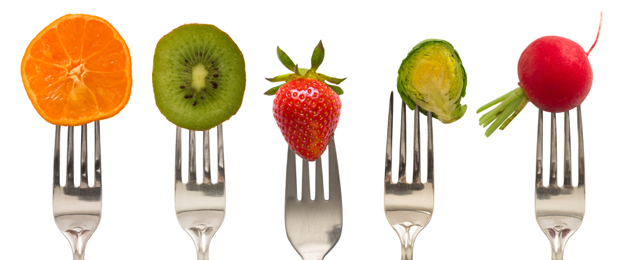
“Much is being made of the benefits of natural water, but all water needs to be processed so that we can drink it.” —Kevin Prior, water and wastewater chemical scientist
I was watching 60 Minutes last night, and Andy Rooney came on and discussed different types of bottled water. He pointed out that there were hundreds of different types of bottled water on the market. Rooney’s questions were, was bottled water safer than tap water, and was there a difference in expensive bottled water versus cheap bottled water? He also spoke to a researcher whose specialty was investigating water purity and content. The researcher told Rooney that there was very little difference in the contents of bottled waters he had tested. He told Rooney that he personally drinks tap water.
What’s funny is that we make lemonade, Kool-Aid, and coffee with tap water, but we’re afraid to drink plain tap water (at least some of us who insist on consuming bottled water). We are obsessed with drinking all natural water. However, when we find water during our outdoor excursions, we run the water through a man-made purifier or treat it with purifying tablets. When finding water in the wilderness, we’re generally advised to purify water even if it appears crystal clear. Why do this? Why not take advantage of all natural water? Because all natural water may contain harmful microbes.
A study conducted by Lalumandier and Ayers (2) looked at the fluoride level and bacterial content of commercially bottled waters versus municipal tap water. Fifty-seven samples of five categories of bottled water were purchased from local stores. Samples of tap water were collected in sterile containers from the four local water processing plants. Fluoride levels were determined, and water was cultured quantitatively. Levels of bacteria were calculated as colony forming units (CFU) per milliliter.
Fluoride levels within the range recommended for drinking water by the Ohio Environmental Protection Agency, Cincinnati, Ohio—0.80 to 1.30 mg/L—were found in only three samples of bottled water tested. The fluoride levels of tap water samples were within 0.04 mg/L of the optimal fluoride level of 1.00 mg/L. The bacterial counts in the bottled water samples ranged from less than 0.01 CFU/mL to 4900 CFU/mL. In contrast, bacterial counts in samples of tap water ranged from 0.2 to 2.7 CFU/mL. Five percent of the bottled water purchased in Cleveland fell within the required fluoride range recommended by the state compared with 100 percent of the tap water samples, all of which were also within 0.04 mg/L of the optimal fluoride level of 1.00 mg/L. The researchers concluded that drinking bottled water based on the assumption of purity could be misleading.
Americans really love their bottled water "water" , spending approximately 6.5 to 7 billion dollars a year on it. Prices of bottled water range from 75 cents to $6.00 per gallon. The price of tap water generally runs between 80 cents and $6.40 per 1000 gallons.

The Natural Resources Defense Council (NRDC) published the results of a four-year study in which they tested more than 1000 samples of 103 brands of bottled water. The study indicated that approximately 25 percent or more of bottled water is really just tap water. The NRDC also found that 18 of the 103 brands tested had more bacteria than allowed under microbiological purity guidelines. About one fifth of the waters contained synthetic organic chemicals, but these were generally at levels below state and federal standards.
Bottled water is subject to less rigorous purity standards and less frequent tests for bacteria and chemical contaminants than those required for tap water. Bottled water plants test for coliform bacteria once a week, and city tap water is tested 100 or more times a month. (These are supposed standards. I’m not sure if we can always rely on this actually occurring.)
According to one source, “Unsafe drinking water is the world’s number one killer according to the UN. There are 250 million cases a year of water borne diseases and 5 to 10 million deaths a year from water borne diseases arising from untreated water. Simple filtration and disinfection with chlorine solution (household bleach) can prevent most of these diseases being passed on through drinking water” (3).
In addition, “There is also no convincing evidence of beneficial effects from consuming high or low mineral content bottled waters” (WHO, No.256, October 2000) The biggest advantage of bottled water is the bottle itself. It makes drinking water more convenient and is easier to carry than a water fountain.
References
- Hale J (2007) Knowledge and Nonsense: The Science of Nutrition and Exercise. Maxcondition.
- Lalumandier JA, Ayers LW (2000) Fluoride and bacterial content of bottled water vs. tap water. Arch Fam Med 9(3):246–50.
- Sense About Science. Making Sense of Chemical Stories. Assessed online on October 16, 2009. At: #.
- Shermer M. Bottled Twaddle: Is bottled water tapped out? Assessed online on October 30, 2007. At: http://mail.colonial.net/~rpavlik/pavlikweb/pdf/handouts/water/bottledwater.pdf.
Elite Fitness Systems strives to be a recognized leader in the strength training industry by providing the highest quality strength training products and services while providing the highest level of customer service in the industry. For the best training equipment, information, and accessories, visit us at www.EliteFTS.com.








